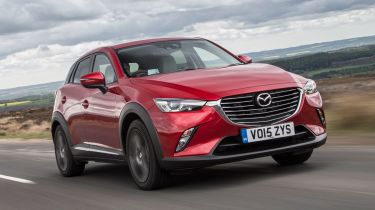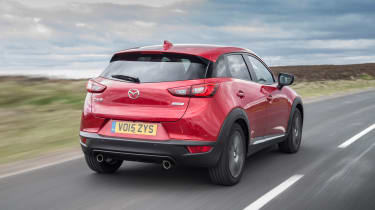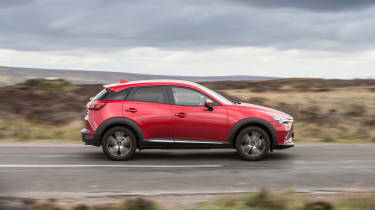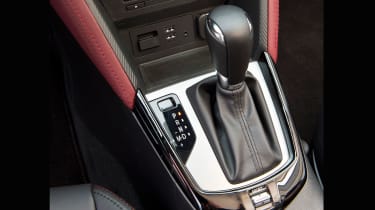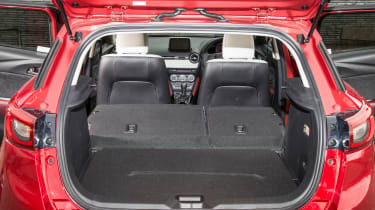Mazda CX-3 2.0 auto 2015 review
We see if Mazda's sharp CX-3 crossover loses its sparkle with an auto box

There’s no doubt that the CX-3 is better with the slick manual gearbox, because at its core it’s a sporty car to drive. However, if you need an automatic, the £1,200 torque converter unit does its job admirably. There are no efficiency penalties with the auto box, either, which is a bonus. On top of that, the sharp looks and dynamic ability still make the CX-3 a very strong choice in this class.
Small cars with a sporty character tend to suit manual gearboxes better than automatics, purely because they bring an extra layer of driver involvement. So, given that Mazda’s new 2-based CX-3 is one of the sportier small SUVs, does the presence of a traditional automatic transmission blunt its dynamic edge?
We’ve driven the six-speed manual CX-3 in petrol and diesel forms, and been impressed with this good-looking, efficient and fun-to-drive package. This is our first UK experience of the auto, a £1,200 extra, tested here in the 118bhp petrol 2.0-litre SE-L Nav model.
Simplicity is what the CX-3 auto is all about. It has a traditional gearstick and two pedals, and steering wheel paddles are nowhere to be seen. It feels odd at first in the modern cabin ambience and low-slung driving position, but you soon get used to it.
Used - available now

2023 Audi
Q4 Sportback e-tron
54,526 milesAutomaticElectric
Cash £23,363
2022 Kia
Niro
18,315 milesAutomaticPetrol1.6L
Cash £17,900
2023 Nissan
Juke
40,858 milesManualPetrol1.0L
Cash £12,287
2022 Volkswagen
T-Roc
36,779 milesAutomaticPetrol1.5L
Cash £18,600• Mazda CX-3 vs Nissan Juke & Renault Captur
Around town, the auto changes ratios smoothly, slurring low-speed upshifts and reacting quickly enough to sudden throttle inputs. The sharp throttle response of the regular CX-3 is carried over although, as with the manual version, you need to rev the naturally aspirated petrol unit harder than you might desire, which brings a slightly coarse engine note into the cabin.
Venture out of the city, and the sporty character of the CX-3 comes more to the fore, even in this auto version.
Performance is pretty sprightly; the self-shifter takes nearly a second longer to get from 0-62mph on paper, but once in its stride it doesn’t feel remotely strangled in the real world. Handling is unaffected, with the CX-3 taking corners with real verve.
Body control is excellent for a small crossover, and although the larger 18-inch wheels add an underlying firmness to the ride it's never uncomfortable. The 16-inch alloys of the SE-L model are a better bet if you're after a smoother ride, but they do look a bit lost in the CX-3's wheelarches.
Knock the shifter over to manual mode and you can nudge it up and down to swap cogs. Unlike some autos it won’t intervene to change for you in manual mode, allowing you to hang on to a lower gear or chase the red line. Sport mode will keep hold of lower gears for brisker progress, although most of the time it just makes the engine noisier.
Impressively for an auto, fuel economy and emissions are virtually identical to the manual version’s. Our example returned 42mpg over mixed town and motorway driving, which isn’t too far from the official claim of 48.7mpg. A CO2 output of 136g/km is about average for the class.
There are better autos out there (the VW Group’s DSG box springs to mind), but in this class it’s undoubtedly better than the CVT in Honda’s HR-V. It's similarly priced to its Japanese rival, but neither is particularly good value when compared with the Renault Captur and Nissan Juke.
Overall there's no doubt the CX-3’s blend of style, space, quality and driver appeal makes it a desirable proposition. A manual is more in-keeping with Mazda's philosophy, and you'll have to pay for the privilege, but it's worth it.
